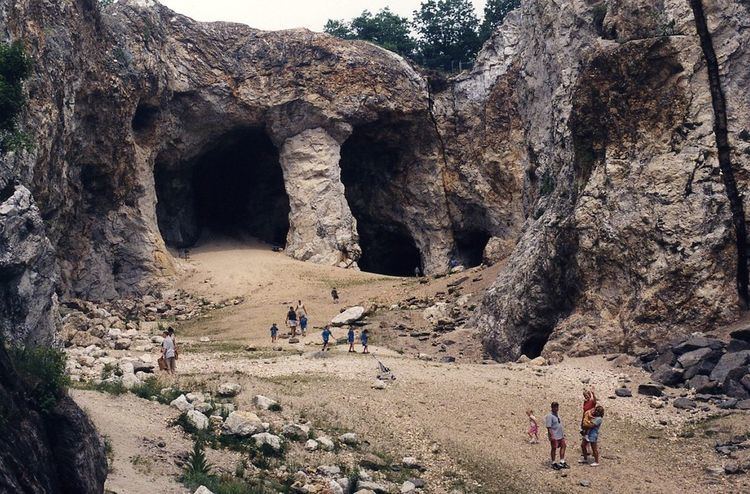Closed 1960s Phone +1 603-523-4275 | State New Hampshire Website www.rugglesmine.com Opened 1803 | |
 | ||
Similar Polar Caves Park, Grafton Pond, Squam Lakes Natural S, Whale's Tale Water Park, Clark's Trading Post | ||
Ruggles mine goes on sale
Ruggles Mine is an open-pit mine that is no longer in operation and had been turned into a tourist attraction. It is now closed and for sale. The mine is located 40 miles (64 km) northwest of Concord, New Hampshire, in the town of Grafton, a short distance from Route 4 at the village green. The spacious pit includes tunnels and underground chambers, some of which are filled with water, for exploring. Visitors are allowed to keep any of the various minerals that are to be found on the mine floor or that can be hammered loose from the walls of the pit.
Contents
- Ruggles mine goes on sale
- Let s visit ruggles mine
- GeologyEdit
- HistoryEdit
- Current operationEdit
- References
Let s visit ruggles mine
GeologyEdit
The mineral deposits found in New Hampshire, known as the Littleton Formation, date from the Devonian period and have been estimated by geologists to be roughly 350 million to 400 million years old. Over 150 minerals have been discovered at the mine, mica being the most prevalent, but also including feldspar, beryl, amethyst, rose/smoky quartz, and garnet. Specimens of the rare uranium minerals, such as uranophane, torbernite, and autunite, have been found.
HistoryEdit
Sam Ruggles (3 August 1770 - 27 May 1843) started the first commercial mica mine in the United States at the site that bears his name. Mica at the time was used to make, among other things, lamp chimneys and stove windows. Ruggles began as a grocer and was merchant of West India goods in Boston, Massachusetts. He was never a resident of New Hampshire (he was born, lived and died in Boston), and hired local workers in Grafton to operate the mine. Local lore states that the mine was started in 1803, but there is no documented evidence that supports the claim. Ruggles' first purchase of property on Isinglass Hill in Grafton was on 5 July 1805. He made subsequent purchases of adjoining properties in 1806 and 1810. His first advertisement for mica ("sheet isinglass") appeared in the Boston Semi-Weekly Advertiser on 9 November 1825. By 1831 his occupation was listed in the Boston Directory as a merchant of sheet isinglass. He had a storefront and warehouse in Boston where he sold mica.
Sam Ruggles sold his mine properties to his son George Haskell Ruggles (1802 - 6 May 1863) in 1834. Sam's son Charles (1809 - 13 April 1869) worked as clerk and bookkeeper for his father and brother. Sam and George managed the business together until Sam's death in 1843, after which George continued the family business on his own. After George's death in 1863, Joseph D. Gould (Sam Ruggles' nephew) was appointed trustee of the estate and managed the mica business until he was removed as trustee by Sam Ruggles' heirs in 1879. Sam Ruggles' grandsons George H., Charles L. and Samuel H. Randall (by Sam's daughter Sarah Ann and Henry Randall) ran the business until 1896 when it was abandoned amid bankruptcy and litigation.
The operation grew over the years - by 1869, more than 26,000 pounds (12,000 kg) a year of mica was being extracted from the mine. The value of the mica mined at Ruggles was estimated to be about $12 million by the 1960s, by which time there were new applications for the mineral in cosmetics, cement block, asphalt roofing, and electrical insulators in appliances such as GE brand toasters. Beginning in 1912, mining began for feldspar, which was used as a nonabrasive scour in the production of china glazes. Later on beryl was also mined.
In 1960, the mine was put up for sale. It was purchased that winter by the Wahlstrom family, who bought it for its well-deserved reputation for top-quality mica. Soon thereafter, however, cheaper sources of mica from foreign suppliers became available and domestic demand correspondingly dropped. The Wahlstrom family considered closing the mine, as well as other options. One such option was to turn it into a tourist attraction. And in 1963 that's what happened—Ruggles Mine opened to the public.
Current operationEdit
The mine was open to the public from mid-May to mid-October through 2015. The mine has been put up for sale by its current owners and will not be open for the 2016 season.
To reach the mine, the drive up Isinglass Mountain is steep and over meandering back roads. At the top of the mountain, however, visitors were greeted to a panoramic view stretching for miles. After paying admission and gaining entrance, visitors would walk down a steep descent into the mine. Visitors were allowed to keep the minerals that they found.
150 minerals have been discovered at the mine. Mica still dominates the mine.
